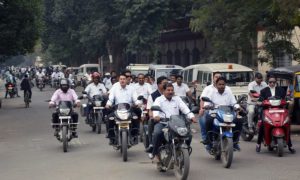In a bid to make Sambalpur town slum-free, Sambalpur Municipality has taken first step by seeking Request For Proposal (RFP) from NGOs for participating in implementation of Rajiv Awas Yojana (RAY) in the town.
The municipal authority published notification in this regard on Thursday following which the interested NGOs can apply for the same on or before August 1, 2013.
The Municipality has also sought RPF for socio-economic survey of households in slum areas of the town besides setting up a technical cell for urban housing for Economically Weaker Sections (EWS) and Lower Income Group under RAY.
The State Government had earlier directed the Collectors to initiate action to free at least six cities including Cuttack, Bhubaneswar, Rourkela, Sambalpur, Berhampur and Puri of slums.
Under Centre-funded RAY, slum dwellers will be provided affordable housing colonies having all basic civic amenities.
There are a total of 168 slums in the district including 103 under Sambalpur Municipal limits, 32 and 33 in Burla and Hirakud NAC respectively.
A survey undertaken by Gujarat Industrial and Technical Consultancy Organisation for preparing a Comprehensive Development Plan (CDP) for Greater Sambalpur has revealed that 66 per cent of the slums in Sambalpur are located along the main road while 24 per cent are situated near nullahs, seven per cent along the railway tracks while three per cent of the slums exist on the hill slopes.
In the absence of any residential plan, migrants have settled in several unauthorised slums without regular water supply, sewerage connections and basic amenities. The municipal authorities claimed that slums would be developed in a planned manner under the RAY.
Municipal Engineer Basanta Kumar Padhy said after NGOs for the work are shortlisted, Detailed Project Report (DPR) will be prepared and cost of housing calculated.
If a particular slum is found suitable, houses under RAY will be constructed there itself or else it will be relocated, he added.
Under the Yojana, 80 per cent of the fund will be provided by the Ministry of Housing and Urban Development, 10 per cent by the State Government while the beneficiaries have to contribute 10 per cent, said Padhy.














